The African Big Five
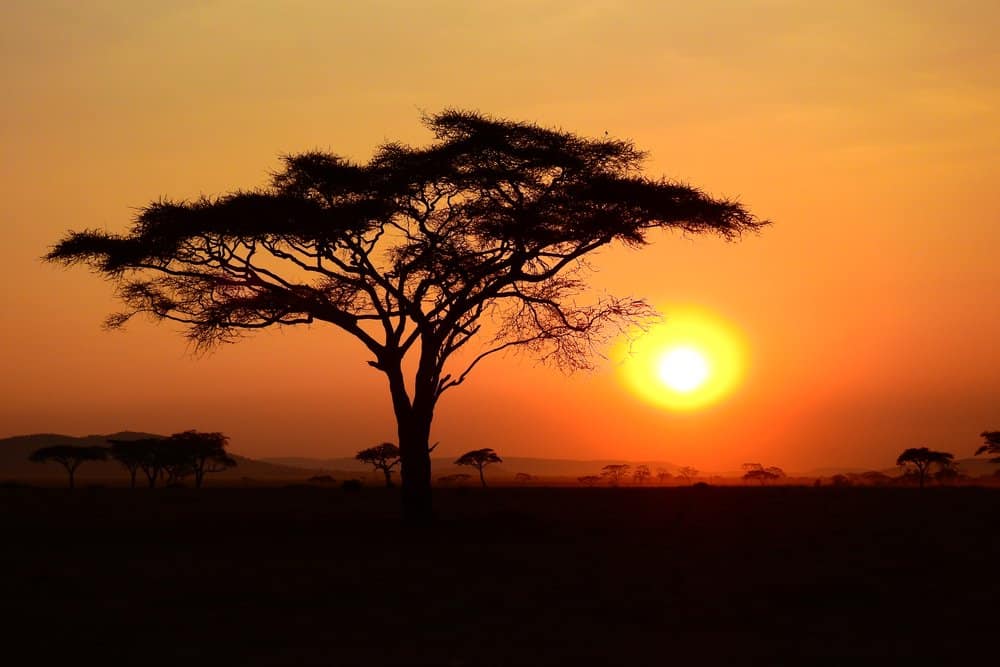
dktirol/Shutterstock.com
The term ‘Big Five’ today portrays the beauty and power of some of Africa’s most iconic animals, but it actually has a much darker history. Originally used by hunters who travelled to the African continent, these five animals were the most highly sought after, hunted as trophies to display the exotic nature of the individual’s bravery.
Sadly however, the excessive hunting and poaching of these animals has led to drastic declines in their population numbers, meaning that all but one are now considered at least Threatened or Endangered by the IUCN. Including two of the largest animals found on land anywhere in the world, these five are truly amongst the most spectacular animals on Earth.
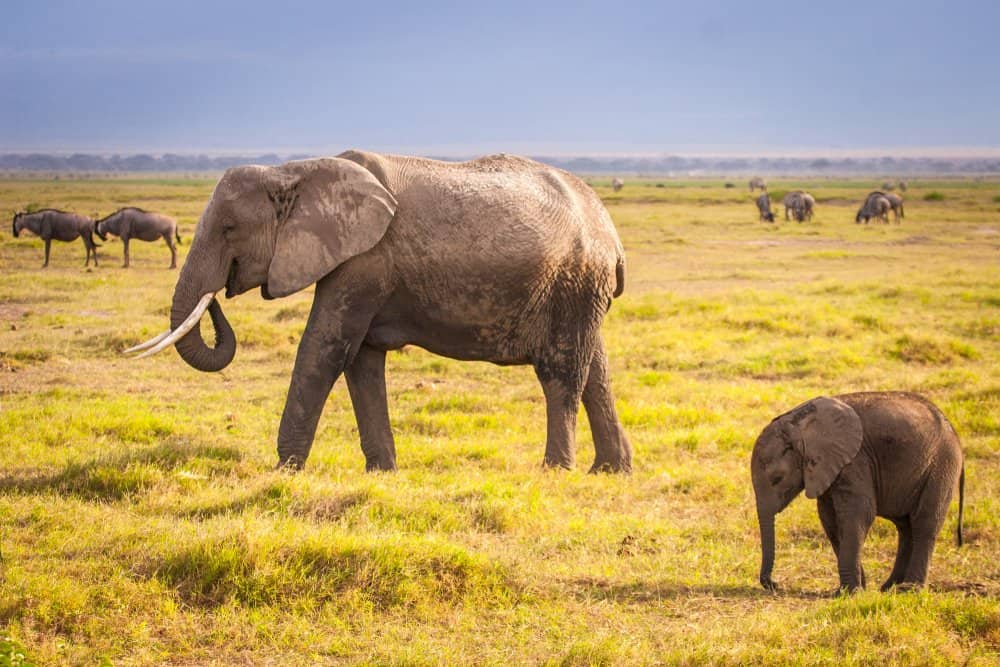
FOTOGRIN/Shutterstock.com
Name: African Elephant
Scientific Name: Loxodonta africana africana
Size: 3m – 3.5m (10ft – 12ft)
Weight: 3,600kg – 5,400kg (7,900lbs – 12,000lbs)
Top Speed: 40kph (25mph)
Life Span: 60 – 70 years
Habitat: Forest, savannah and flood plains
Conservation Status: Threatened
Est. Population Size: 300,000
Fun Fact: Can drink up to 50 gallons a day!
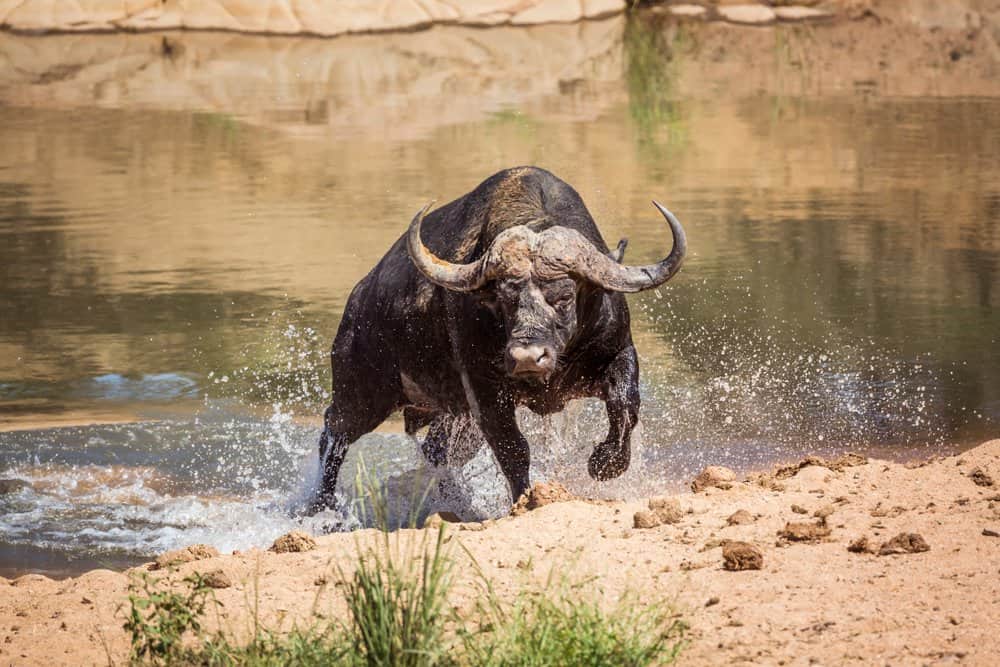
PACO COMO/Shutterstock.com
Name: Buffalo
Scientific Name: Syncerus caffer
Size: 1.7m – 1.8m (67in – 71in)
Weight: 600kg – 907kg (1,323lbs – 2,000lbs)
Top Speed: 35kph (22mph)
Life Span: 15 – 22 years
Habitat: Woodland and grass pastures
Conservation Status: Least Concern
Est. Population Size: 900,000
Fun Fact: Has no real natural predators!

Brett Wallington/Shutterstock.com
Name: Leopard
Scientific Name: Panthera pardus
Size: 125cm – 190cm (49in – 75in)
Weight: 28kg – 90kg (62lbs – 198lbs)
Top Speed: 114kph (71mph)
Life Span: 12 – 18 years
Habitat: Dry rugged terrain and open savanna
Conservation Status: Threatened
Est. Population Size: 50,000
Fun Fact: There are 30 different sub-species!
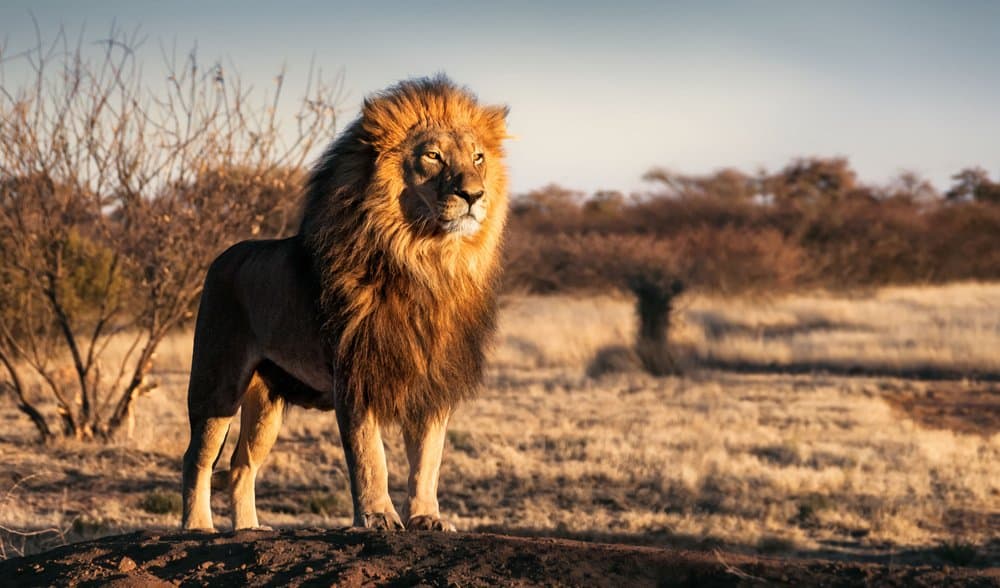
2021 Photography/Shutterstock.com
Name: Lion
Scientific Name: Panthera leo
Size: 1.4m – 2.5m (4.7ft – 8.2ft)
Weight: 120kg – 249kg (264lbs – 550lbs)
Top Speed: 56kph (35mph)
Life Span: 10 – 15 years
Habitat: Arid plains and savanna grasslands
Conservation Status: Threatened
Est. Population Size: 23,000
Fun Fact: Lives in small groups called prides!
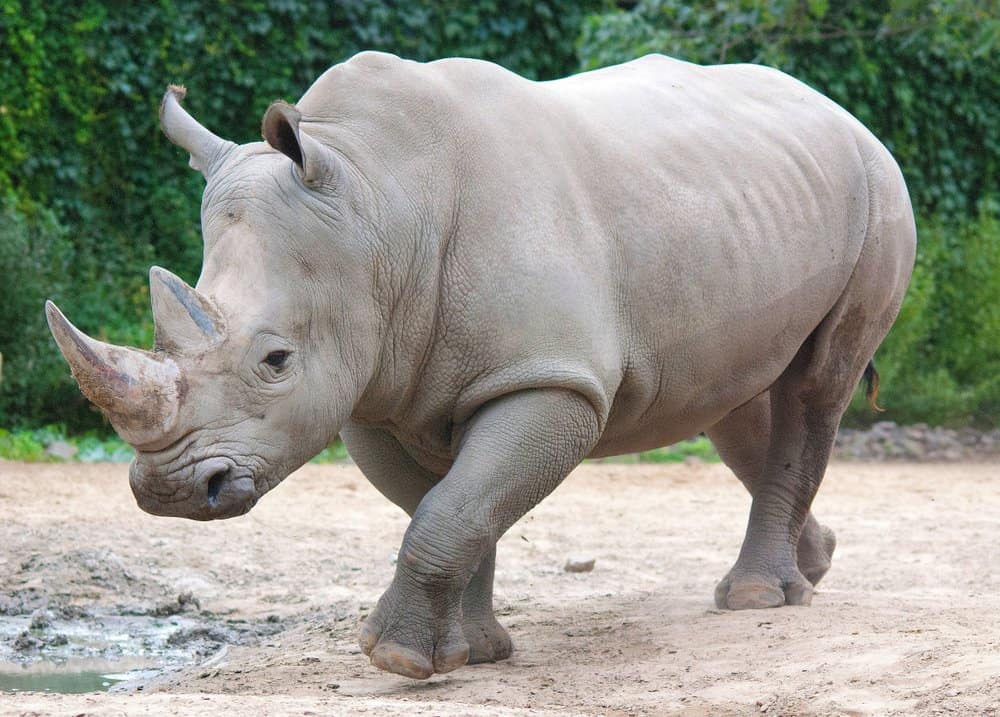
meunierd/Shutterstock.com
Name: White Rhinoceros
Scientific Name: Ceratotherium simum
Size: 3.4m – 4.2m (11ft – 14ft)
Weight: 1,440kg – 3,600kg (3,168lbs – 7,920lbs)
Top Speed: 42kph (30mph)
Life Span: 45 – 50 years
Habitat: Tropical bushland and savanna grasslands
Conservation Status: Endangered
Est. Population Size: 11,670
Fun Fact: The second largest animal on the land!
More from A-Z Animals

dktirol/Shutterstock.com
The term ‘Big Five’ today portrays the beauty and power of some of Africa’s most iconic animals, but it actually has a much darker history. Originally used by hunters who travelled to the African continent, these five animals were the most highly sought after, hunted as trophies to display the exotic nature of the individual’s bravery.
Sadly however, the excessive hunting and poaching of these animals has led to drastic declines in their population numbers, meaning that all but one are now considered at least Threatened or Endangered by the IUCN. Including two of the largest animals found on land anywhere in the world, these five are truly amongst the most spectacular animals on Earth.

FOTOGRIN/Shutterstock.com
Name: African Elephant
Scientific Name: Loxodonta africana africana
Size: 3m – 3.5m (10ft – 12ft)
Weight: 3,600kg – 5,400kg (7,900lbs – 12,000lbs)
Top Speed: 40kph (25mph)
Life Span: 60 – 70 years
Habitat: Forest, savannah and flood plains
Conservation Status: Threatened
Est. Population Size: 300,000
Fun Fact: Can drink up to 50 gallons a day!

PACO COMO/Shutterstock.com
Name: Buffalo
Scientific Name: Syncerus caffer
Size: 1.7m – 1.8m (67in – 71in)
Weight: 600kg – 907kg (1,323lbs – 2,000lbs)
Top Speed: 35kph (22mph)
Life Span: 15 – 22 years
Habitat: Woodland and grass pastures
Conservation Status: Least Concern
Est. Population Size: 900,000
Fun Fact: Has no real natural predators!

Brett Wallington/Shutterstock.com
Name: Leopard
Scientific Name: Panthera pardus
Size: 125cm – 190cm (49in – 75in)
Weight: 28kg – 90kg (62lbs – 198lbs)
Top Speed: 114kph (71mph)
Life Span: 12 – 18 years
Habitat: Dry rugged terrain and open savanna
Conservation Status: Threatened
Est. Population Size: 50,000
Fun Fact: There are 30 different sub-species!

2021 Photography/Shutterstock.com
Name: Lion
Scientific Name: Panthera leo
Size: 1.4m – 2.5m (4.7ft – 8.2ft)
Weight: 120kg – 249kg (264lbs – 550lbs)
Top Speed: 56kph (35mph)
Life Span: 10 – 15 years
Habitat: Arid plains and savanna grasslands
Conservation Status: Threatened
Est. Population Size: 23,000
Fun Fact: Lives in small groups called prides!

meunierd/Shutterstock.com
Name: White Rhinoceros
Scientific Name: Ceratotherium simum
Size: 3.4m – 4.2m (11ft – 14ft)
Weight: 1,440kg – 3,600kg (3,168lbs – 7,920lbs)
Top Speed: 42kph (30mph)
Life Span: 45 – 50 years
Habitat: Tropical bushland and savanna grasslands
Conservation Status: Endangered
Est. Population Size: 11,670
Fun Fact: The second largest animal on the land!






